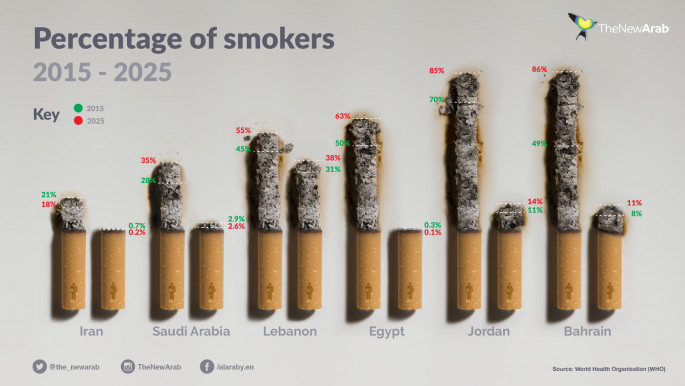Toxic pollution shuts schools in Tehran
Schools are shut in Iran's capital as the city experiences another wave of smog.
2 min read
Tehran has often experienced air pollution (Getty)
Primary schools will be closed on Monday in Tehran as thick fog caused by pollution smothers the Iranian capital and most of the surrounding province, local authorities said.
They also announced on Sunday they would impose traffic restrictions in Tehran, home to 8.5 million inhabitants, allowing cars onto the streets in alternating shifts, depending on their number plates.
Similar measures were taken in December when primary schools in Tehran and most of its province were forced to close for several days because of the pollution.
Average concentrations of the finest and most hazardous airborne particles hit 144 microgrammes per cubic metre in Tehran on Sunday and peaked at 169 in some areas, municipal authorities said.
That is far above the World Health Organization's recommended maximum of 25 microgrammes per cubic metre on average over a 24-hour period.
The microscopic particles lodge deep in the lungs and are harmful to human health.
Local authorities urged the most vulnerable people - children, pregnant women, the elderly and those suffering from heart problems - to remain indoors.
Every year, Iran's sprawling capital suffers some of the worst pollution in the world when cool temperatures cause an effect known as temperature inversion.
The phenomenon creates a layer of warm air above the city that traps in the pollution produced by more than eight million cars and motorbikes.
This year the situation has been exacerbated as the country has seen very little rainfall.
Iranian media reports say 80 percent of the pollution in Tehran is caused by fumes from vehicle exhaust pipes.
They also announced on Sunday they would impose traffic restrictions in Tehran, home to 8.5 million inhabitants, allowing cars onto the streets in alternating shifts, depending on their number plates.
Similar measures were taken in December when primary schools in Tehran and most of its province were forced to close for several days because of the pollution.
Average concentrations of the finest and most hazardous airborne particles hit 144 microgrammes per cubic metre in Tehran on Sunday and peaked at 169 in some areas, municipal authorities said.
That is far above the World Health Organization's recommended maximum of 25 microgrammes per cubic metre on average over a 24-hour period.
The microscopic particles lodge deep in the lungs and are harmful to human health.
Local authorities urged the most vulnerable people - children, pregnant women, the elderly and those suffering from heart problems - to remain indoors.
Every year, Iran's sprawling capital suffers some of the worst pollution in the world when cool temperatures cause an effect known as temperature inversion.
The phenomenon creates a layer of warm air above the city that traps in the pollution produced by more than eight million cars and motorbikes.
This year the situation has been exacerbated as the country has seen very little rainfall.
Iranian media reports say 80 percent of the pollution in Tehran is caused by fumes from vehicle exhaust pipes.
 |
![Iran smog [Getty] Iran smog [Getty]](/sites/default/files/styles/image_345x195/public/media/images/D12AD1E1-4093-41C8-A4CB-24437C970B05.jpg?h=d1cb525d&itok=Fy8SLrbM)




 Follow the Middle East's top stories in English at The New Arab on Google News
Follow the Middle East's top stories in English at The New Arab on Google News


